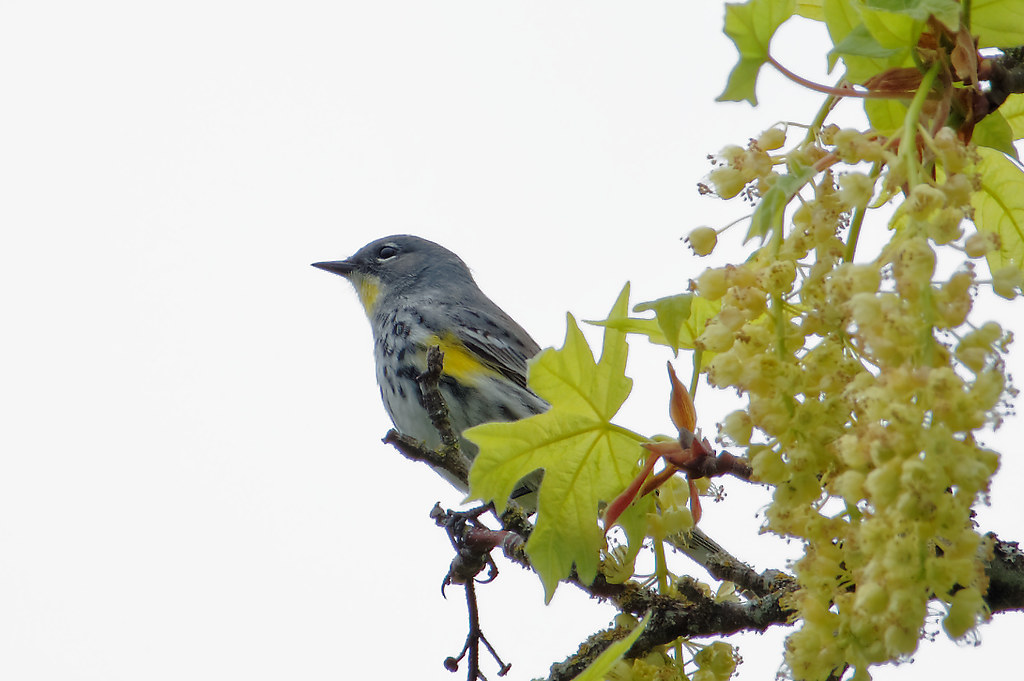 Originally posted by lidy
Originally posted by lidy 
One last question: would you please have a look at this picture and tell me if you see any signs of front or back focusing? It was also taken with the KP+55-300 PLM with the following settings: 300mm @ f/6.3 Ė 1/160 Ė ISO 800. The bird was about 3-4 meters away from me and what also helps of course is that itís a bit bigger than the tiny sparrows. ��
I'd say the plane of focus is on the foot and breast of the blackbird, rather than the eye and the beak. Assuming you were aiming for the eye, the focus is slightly behind, Again, this doesn't necessarily mean that the lens is off - it might be that the focus point was on the wrong spot at the point of shooting, or the bird moved slightly, or you did. It looks like you used a flash - that often causes a slight delay and there might have been some fractional movement (bird or photographer) in that time.
For a fine calibration of the lens, using the ruler and target as Norm describes, you would really need to put the camera on a tripod, because that is the only way to be sure that the camera has not moved and that the only variable is the focusing of the camera and lens.
Before doing that, as a quick and dirty test, try handheld shooting of a static subject - just anything with enough detail, like Norm's tea packet - in good light and see whether, on a few tries, you and the lens can get it right at the widest aperture. Try zooming the PLM to the point (about 260mm) where the maximum aperture will be f5.6 so the depth of field will be narrower.. Get the subject far enough away to be challenging. Use the centre focus point. Get yourself as steady as possible and see whether you can get the focus spot on.
If it is consistently front or back focusing, then you might need to try the more precise test for calibration. More likely it is neither - you will get some that are off and some that are on the target. Just practise a bit and your success rate will improve.
Shooting technique really matters here - have a look at this article:
Making the Most of Long Exposure Handhelds - Introduction - In-Depth Articles The article is about reducing camera movement, but I have found these techniques will also improve the ability to get accurate focus. Even though I have been shooting for a long time, practising these techniques has helped my hit rate a lot in the last few years. There's always room to improve.
 Originally posted by lidy
Originally posted by lidy 
Nowadays I mostly use TAv, but looking at the previous 2 pictures I realize I may have set the shutter speed too low for the first one (1/160). The second one was shot at 1/1000 Ė would you say thatís high enough for these little flitting creatures?
I might chime in on this one. I mostly use TAv as well. The point is not which mode you use but what the setting is. Talking about the shots of the sparrow at the feeder, it's all about the success rate. At 1/160th your rate of good shots of a bird at a feeder will be fairly low; at 1/1000th it will be much higher. But you have to trade that off against other variables. At f8 you will have more depth of field to work with (and more margin for focus error), and with most slow-aperture lenses you will have more resolution. As for ISO, the KP gives you plenty of ISO to play with, but it is still worth keeping it as low as possible and only going to 3200 or higher when you need to. I don't know what all the settings were for the two sparrow shots, but if the light was good enough to allow 1/1000th without a very high ISO, great. But often that is not the case, especially with a slow-aperture lens like the PLM.
Bob's warblers are moving around a lot faster, so he needs a higher speed. With a bird at a feeder, by and large I'd say 1/640th or 1/800th should generally be plenty fast enough. In fact I would often go slower than that (because the light wouldn't be enough for a faster speed) and accept that there will be plenty of throwaways. Unless there is really good light (our feeding areas are in shade most of the time), with the PLM at 300mm f6.3 I would typically start at 1/250th - I regard it as a bonus if I can get 1/500th or 1/640th. Sometimes I have to go a lot slower (e.g. 1/60th) but naturally the success rate will then plummet. Sometimes shooting a burst will get you one or two that are good while the rest aren't. But often with our birds, there is a moment when they are perfectly still between sips or bites or movements - that is the moment I try to capture. If I can be confident of holding the camera steady, that moment can be captured with quite a slow speed.


 Similar Threads
Similar Threads 









 Thank you Des and Jabobby.
Thank you Des and Jabobby. 











 Post #2197 by Des
Post #2197 by Des








